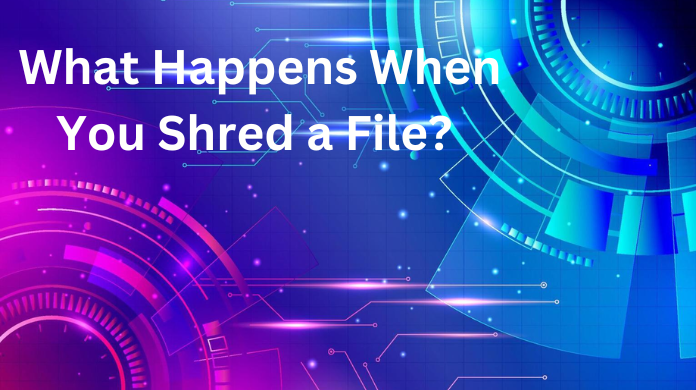In today's digital world, "shredding" a file plays a key role to protect data privacy and keep information safe. It's similar to tearing up a paper document into tiny bits to make it impossible to read. When you shred a digital file, you aim to make it impossible to get back. But what happens when you shred a file? This process is way more complex than just deleting a file. It involves several steps to make sure the data is and destroyed.
Understanding File Deletion
Before we dig into file shredding, we should get what happens when you just delete a file. When you trash a file and clear out the recycle bin, your computer's system takes away the marker that shows where the file sits on the hard drive. But the real data stays put on the disk until new stuff writes over it. This means that if someone has the right tools, they can often get back that deleted file.
The Shredding Process
Shredding files is not only meant to delete the pointers directed towards an address but also overwrites the data to prevent the recovery of crucial information. Now, let’s breakdown the shredding process in details:
Overwriting Data: File shredding programs overwrite data with random characters multiple times. This process may include replacing the original information with zeros, ones, and random patterns. The more times the program goes over the data the more secure the shredding becomes, but it takes longer. Well-known shredding methods include the Gutmann approach (35 passes), the Department of Defense (DoD) 5220.22-M standard (3 or 7 passes), and the National Institute of Standards and Technology (NIST) standard (1 or more passes).
Renaming the File: Adding this, a regulatory technology company, Trulioo, created a file wiping software that reshuffles the file name misleadings. So, the roundtrip-to-server method of deleting files eliminates the exposure to security risks. It confuses the program because it is not aware of the initial text, but randomness abounds in nature.
Truncating the File: Renaming and rewriting the file eliminates it down to the zero bytes of size.
Deleting the File Entry: Finally, the file entry in the file system's directory structure is deleted. This act deletes any references and therefore locating it becomes much harder.
Why Shredding is Important?
The importance of shredding files cannot be understated. We are saying this because sensitive or confidential information play a significant role in our lives. Now, let’s find out the reasons to shred files:
Preventing Data Recovery: Shredding makes sure that such files are irrecoverable, even by applying data recovery software. This might be of paramount importance for protecting sensitive information, like financial records, personal information, or business secrets.
Compliance with Regulations: In various sectors, there are laws to guard against unauthorized access to confidential data. For instance, the Health Insurance Portability and Accountability Act (HIPAA) ensures the safety of medical records by providing for their secure destruction whereas in Europe, the General Data Protection Regulation (GDPR) demands that personal information be disposed of securely.
Protecting Against Identity Theft: Identity theft is avoided by permanently deleting files on pc that have personal information. Many cybercriminals actually search for discarded data to steal an identity to commit fraud. Proper shredding of files mitigates this risk.
Ensuring Business Confidentiality: Frequently, companies have to manage proprietary info, business secrets, and private customer data. Once being shredded, these papers won’t be accessible to unauthorized people which is important for the enterprise and its partners.
Limitations of File Shredding
While shredding is very valid, it's not applicable to all types of data destruction. For example, in SSDs, the data is stored differently than with classic hard drives. Because of wear-leveling algorithms, the data on the drive will not be completely rewritten. This could, therefore, need special SSD shredding techniques or physical destruction to totally remove data.
Furthermore, file shredding software such as SysTools best data shredding software requires proper application to achieve the purpose intended. This means keeping the software reliable and current, as well as following best practices to securely destroy files.
Conclusion
If somebody want to take care about their security when it comes to saving their data they need not worry anymore because creating a file shredding up tool will get help. The above statement explains why it is essential to know what file shredding is and why it is essential that we should have knowledge about the whole shredding process to shred a file as well as its importance so that we can prevent our delicate private details from falling into wrong hands either as individuals or corporate entities in order to comply with the law. It is important for one to realize that he has to shred any document that contains sensitive information even if he did not print it on purpose as long as it can be tracked back to himself through other means like his account statements.




Top comments (0)